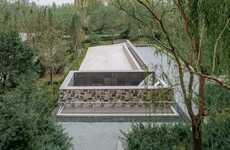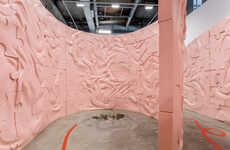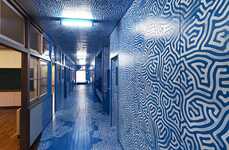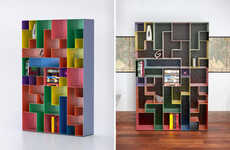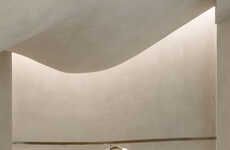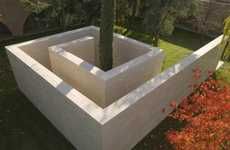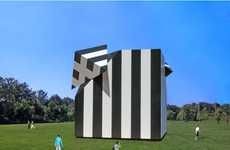The JAIST Gallery Design is Inspired by Cryptic Puzzles
Gil Cohen — February 17, 2013 — Art & Design
References: tatsumatsuda & ignant.de
Meant to host Japan’s largest puzzle collection, the JAIST Gallery design was styled after a puzzle itself.
Created by Tatsu Matsuda Architects, the layout features a combination of cubic displays and interlocking boxes that can be arranged and rearranged in numerous different ways. The architects had to use a computer algorithm to figure out how to incorporate 144 Penta Cubes into the room, creating a construction that can be separated into 12 segments. The gallery visitors, there to see the impressive puzzles on display, will be surprised to find themselves within one, meshing their environment with the artwork.
The JAIST Gallery design is almost labyrinthine in its complexity of structure, incorporating a puzzling array of interlocking cubic elements within architecture.
Created by Tatsu Matsuda Architects, the layout features a combination of cubic displays and interlocking boxes that can be arranged and rearranged in numerous different ways. The architects had to use a computer algorithm to figure out how to incorporate 144 Penta Cubes into the room, creating a construction that can be separated into 12 segments. The gallery visitors, there to see the impressive puzzles on display, will be surprised to find themselves within one, meshing their environment with the artwork.
The JAIST Gallery design is almost labyrinthine in its complexity of structure, incorporating a puzzling array of interlocking cubic elements within architecture.
Trend Themes
1. Cubic Displays - Opportunity for businesses to create innovative display solutions using interlocking cubic elements.
2. Puzzle-inspired Design - Potential for industries to incorporate cryptic puzzle aesthetics into their products and spaces.
3. Computer Algorithms in Architecture - Disruptive innovation possibilities for leveraging algorithms to design complex and adaptable structures.
Industry Implications
1. Art Galleries - Art galleries can explore the use of interlocking cubic displays to create unique exhibition experiences.
2. Furniture Design - Furniture designers could incorporate puzzle-inspired elements into their products, offering interactive and modular solutions.
3. Architecture - Architects can utilize computer algorithms to create complex and adaptable structures, transforming the way buildings are designed and constructed.
4.4
Score
Popularity
Activity
Freshness
